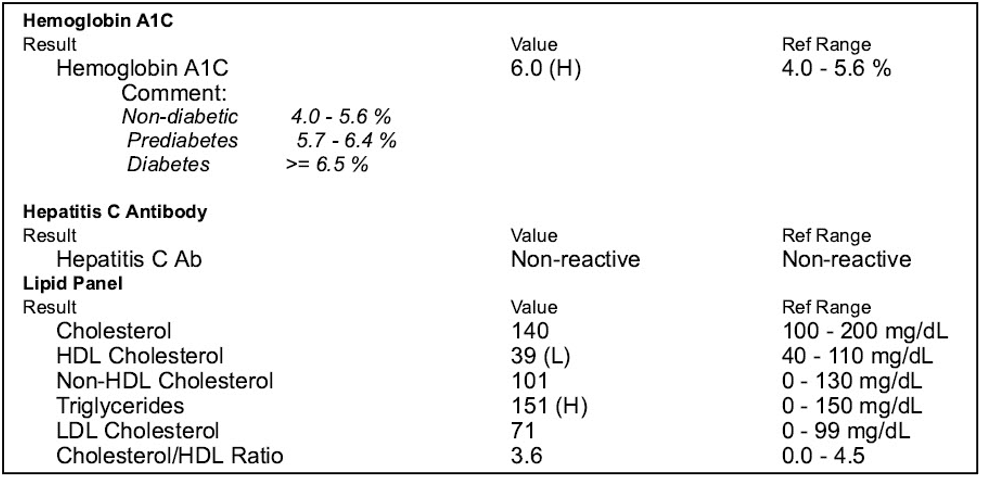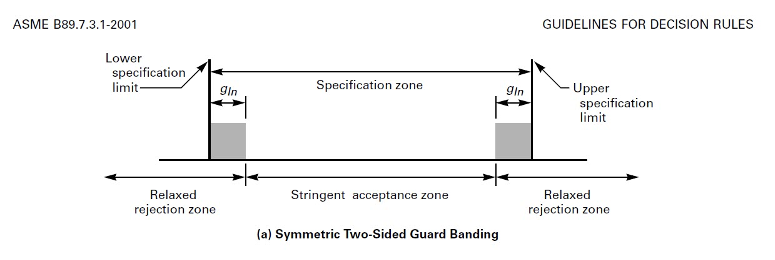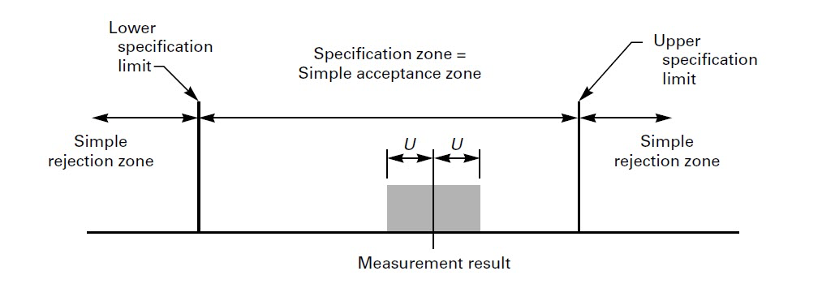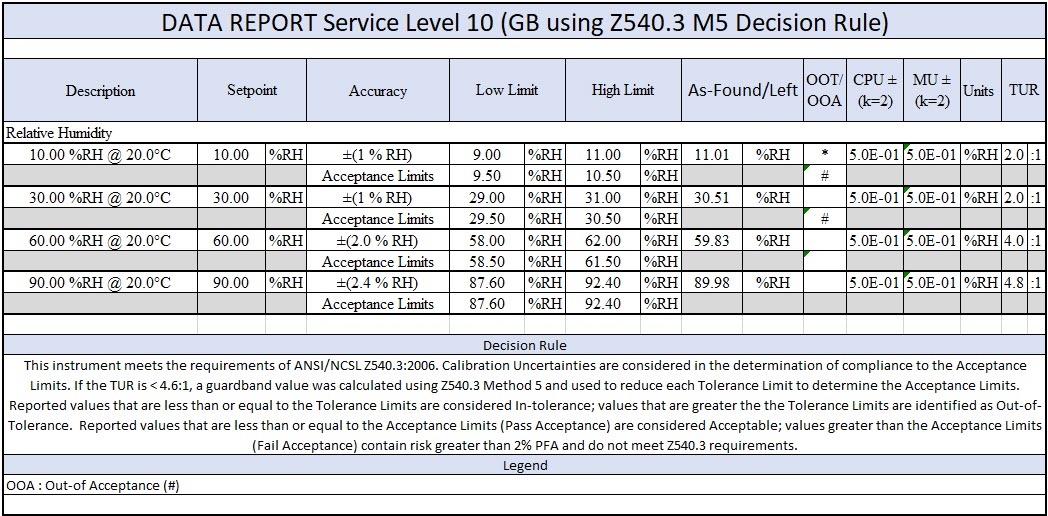

Guard Banding 101: What is Guard Banding and what is its purpose?
At your recent annual physical examination your doctor ordered lab work for a complete metabolic panel. The results might look something like this:


You see that there are a few concerns: A1C and Triglycerides are high and HDL is low. Have you ever questioned whether or not the tests were accurate? Or do you just focus on the poor results and what the doctor is telling you about how to correct those? You might assume, like most patients, that the lab knows what they are doing and that the results are valid. But there are many ways things can go wrong, resulting in false test results. And the lab performing the testing isn’t the only place where mistakes can be made. Errors can occur in many parts of the process, from the wrong test(s) being ordered, to patient preparation, to collection of the sample, to the method used for testing, to improper labeling, and even if all of that goes right, sometimes results are read/interpreted incorrectly giving the wrong diagnosis. It happens!1


Focusing on the lab and the method used for each test, there exists a Margin of Error (MOE) associated with each test. The MOE is a ± number which indicates to the average person how much precision (i.e., variability or uncertainty) to expect in the reported results.
So why report a MOE? How is it useful? The long answer gets into probability and statistics, but the short answer is this: the MOE can be used to show the validity of a test result in order to provide a level of confidence in the measurement. This can improve our understanding on whether or not we need to take action to correct a problem. Using Triglycerides as an example, if the MOE for this test result is ±3 mg/dL, then the reported result of 151 mg/dL could actually be as low as 148 mg/dL or as high as 154 mg/dL. The high end of the Reference Range is 150 mg/dL. So taking into account the MOE, even if the true result is 148 mg/dL, your Triglycerides are still at a critically high value and you need to do something about it. This practice of applying the MOE (or uncertainty) of a measurement to the result is known as Guard Banding (i.e., safeguarding). As previously stated, a useful purpose for the MOE is to give you an idea how capable a lab is when reporting results of a test. What if this lab’s MOE for the Triglycerides test was ±50 mg/dL? Now your Triglycerides might actually be as low as 101 mg/dL, which would be much better, or could be as high as 201 mg/dL, which would be much worse! How much confidence would you have in a lab with that much uncertainty? What if the lab does not even track/report their MOE? Now you don’t even know what their capability is with respect to the test results they are reporting, which should leave you with NO confidence in the test results!
Returning to Guard Banding, there are other methods of Guard Banding than to just take the completely conservative approach of adding/subtracting the MOE. We’ll touch on those in a moment. In the meantime, consider this: every measurement, whether a bloodwork test result, a political exit poll result, the gas pump indication of how much fuel has been delivered, or performing a calibration of a pressure gauge – all of these contain some amount of potential error, called uncertainty. We can estimate how much error is present and then we can use that to apply a method to Guard Band the reported result of the measurement in order to avoid False Acceptance of a value that might be incorrect.
Specifically related to calibration, the new requirements for accreditation as well as the definition of measurement traceability requires that calibration results must include the reported result and must include the measurement uncertainty for that reported result. The world is finally realizing that reported results carry uncertainty and, therefore, reporting a value without its uncertainty is an incomplete statement as to its true value.
Now that calibrations must include uncertainties, we can also use the uncertainty to apply a Guard Band. However, in Metrology we do not add/subtract the uncertainty directly to/from the reported measurement, as was done in the example of the metabolic test results. Instead, we change the tolerance limits by the amount of the uncertainty to determine whether the instrument’s reported value lies safely within the Guard Band Acceptance Limits.
Here is a pictorial that illustrates how this establishes an Acceptance Zone: The gray areas represent the measurement uncertainty (or MOE). By reducing the tolerance limits (the Specification Zone) by the value of the measurement uncertainty, an acceptance tolerance (Stringent Acceptance Zone) is created, also called the Guard Band tolerance. Any value outside of that acceptance zone is considered to ‘Fail Acceptance’. You may be familiar with Out of Tolerance (OOT), which still applies here for any value outside of the Specification Zone. There can be two results: In Tol/OOT related to the Specification Zone and Pass/Fail Acceptance related to the Acceptance Zone.


Again using the metabolic example, we would modify the Ref Range from 0 – 150 mg/dL by the amount of the MOE (±3 mg/dL), therefore making the Acceptance Limit for Triglycerides: 3 – 147 mg/dL. The reported test result of 151 mg/dL is now well above the Acceptance Limit as opposed to being ‘just above’ the Reference Range. Using Guard Banding, we can see that this is serious and needs our attention to get it back down before it causes other health problems.
To take this one step further, in Metrology we don’t always use the full uncertainty value for Guard Banding. In fact, there are many different methods which yield different levels of risk that can be used to calculate the Guard Band, depending on the client’s needs. Here is Transcat’s policy on Guard Band options for clients:
- The ISO 17025 accreditation process requires Transcat to document each client’s Decision Rule related to mitigating measurement risk, also known as Probability of False Acceptance (PFA) or Consumer Risk. Transcat offers six Guard Band methods from which clients may choose as their Decision Rule:
-
- ANSI/NCSL Z540.3: 2006, Method 5: 100% Stringent Acceptance, Guard Band = 1U, which yields PFA<2%
- ANSI/NCSL Z540.3: 2006 Method 6: Guard Band = M x U, where M (multiplier) is dependent upon the TUR; this method yields PFA<2%
- ILAC G8:2019, Table 1: Guard Band = 1U which yields PFA<2.5%
- ASME B89.7.3.1, clause 5.2: 100% Stringent Acceptance, Guard Band = 1U, which yields PFA<2%
- ASME B89.7.3.1, clause 5.3: 100% Relaxed Acceptance, Guard Band = +1U, added to the Specification Zone, which yields PFR<2%; PFR=Probability of False Reject
- Custom: The client provides their own custom PFA limit
If a client does not need, want, or select one of these Decision Rules, the default service for an Accredited Calibration will be Calibration with Data and Uncertainties applying Simple 4:1 Acceptance per ASME B89.7.3.1, clauses 4.1 and 5.1 which use a 4:1 TUR with Mean Measurement Results and Rejection with Cause. Simple Acceptance does not take into account the measurement uncertainty for Pass/Fail decisions (i.e., In Tolerance or Out Of Tolerance). Simple Acceptance is the situation when the Acceptance Zone equals and is identical to the Specification Zone.


In a nutshell, clients can choose our default service which reports the measurement uncertainty but does not apply Guard Banding (Simple Acceptance) or they may choose one of these six methods that will apply Guard Banding, depending on which method they prefer. There are formulas behind each of these six methods but what is important to understand is that, regardless of which method is selected, each of these methods creates a second tolerance window (Guard Band tolerance; called the Guard Band Acceptance Limits) by reducing the original tolerance limits by a pre-determined amount.
When a client selects Transcat’s service level that applies one of the Guard Band methods for their Decision Rule, each calibration result will be compared against two sets of tolerances: 1) the original OEM tolerance and 2) the Guard Band Acceptance Limits. If the reported value exceeds the narrower GB Acceptance Limits, we will indicate it as “Fails Acceptance” and mark it with a hashtag (#). If the reported value also exceeds the OEM tolerance, we will mark it with an asterisk (*) as we have always done and indicate that it is Out Of Tolerance (OOT). Here is an example of how that calibration report might be formatted:


Instruments are used in manufacturing processes to make decisions on whether the product meets its design requirements. No one wants a product manufacturer to believe their product is good and release it to their customers when it was incorrectly accepted and was actually bad (i.e., did not meet its design specs). That scenario is the definition of False Acceptance. The Metrology industry was created to keep those instruments aligned so that the measurements they provide for decisions on product acceptance remain accurate and reliable.
These new ISO 17025 accreditation requirements stem from an evolution in Metrology. It is part of a continuous improvement process designed to further protect products for consumers – which is why Probability of False Accept (PFA) is called Consumer Risk. The target is zero (0) Consumer Risk so that products are safe and do not cause injuries or fatalities. Eliminating or minimizing Consumer Risk on products manufactured by many industries (Aerospace, Automotive, Pharmaceutical, Medical Devices, Food and Beverage, etc.) is the end goal – which should be important to everyone. This is one small step closer to that goal for manufacturers… one giant leap for mankind!
1 What Everyone Should Know About Lab Tests, Haymond, 5/9/2016, Guest Blog/Opinion, Scientific American
For more information about our accreditation or your calibration requirements, contact one of our calibration professionals at 800-828-1470 or contact us.
